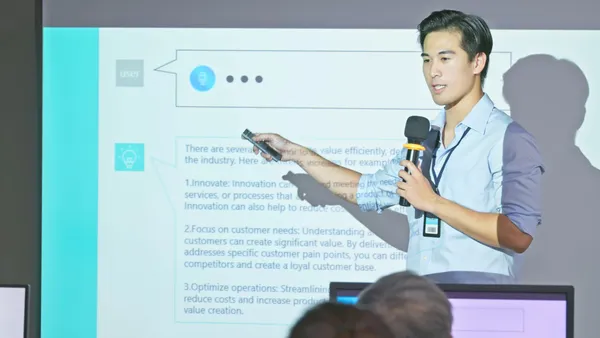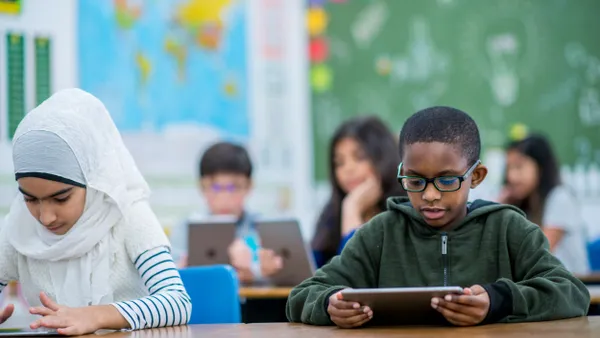Dive Brief:
-
Artificial intelligence (AI) has made its way into education, taking on tasks typically done by humans such as grading, individualizing lesson plans and helping students learn English, according to an article in The Hechinger Report.
-
Typical applications for AI in education involve the use of computer technology to help shape how students learn. Others provide a platform to teach students how to code and program in order to build AI themselves.
-
Current AI use in classrooms isn’t wide-reaching, however, and some experts worry the technology could present problems with student privacy and even perpetuate inequities in education.
Dive Insight:
Research has shown AI has a promising future in education. Machines have been able to help teachers navigate differentiated instruction and identify students who are at risk of not graduating on time, for example.
Yet, risks remain and should be addressed before AI gains a permanent foothold in classrooms.
Privacy, for one, is a genuine concern educators have raised. Last year, Consumer Reports found a number of privacy concerns related to children’s educational smart toys, and popular home assistants at use in classrooms, such as Alexa and Google Home, have also raised red flags. Yet oftentimes, these devices are used in classrooms without administrators’ knowledge and with no clear policy to protect students’ data.
Another chief problem for some educators is the concern that AI, made by humans, could perpetuate systemic inequities in education.
As Andrew Perry of the Brookings Institution writes for The Hechinger Report, “AI is only as good as the information and values of the programmers who design it, and their biases can ultimately lead both to flaws in the technology and to amplified biases in the real world.”
For AI to disrupt the status quo — as it’s been billed by vendors and others — developers must build these systems through the lens of racial equity, which includes getting the perspective of teachers of color, who better reflect the diversity of their students, he writes.
Where Perry finds promise is helping lessen teachers’ workloads and improving their working conditions, leading to increased job satisfaction and less attrition, which, research shows, has a direct impact on students.






 Dive Awards
Dive Awards







